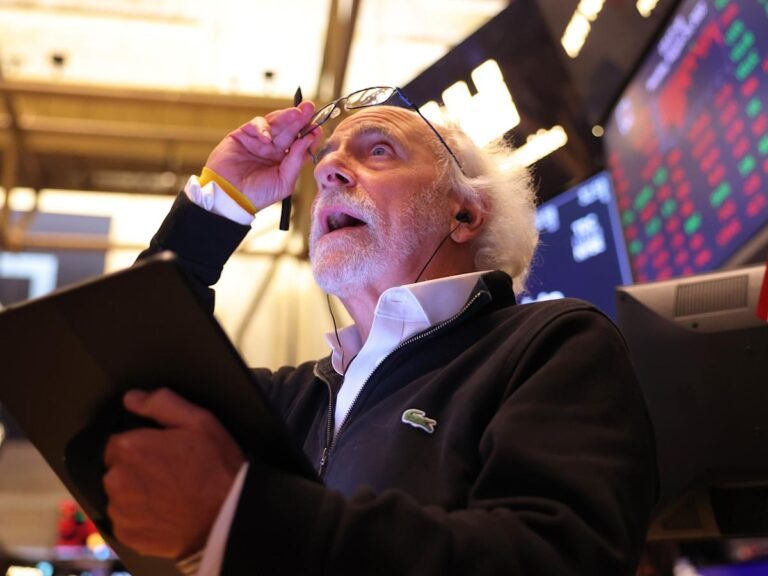-
Markets look like investors now believe the US economy is “recession-proof“
-
DataTrek Research pointed to signs in stocks and bonds that reflect extremely high confidence in the US economy.
-
Most forecasters on Wall Street also expect the US to avoid a recession this year.
“Recession-proof.”
Professional economists might balk at the phrase, but it’s how the stock and bond markets see the economy in the second half of 2025.
DataTrek Research wrote on Tuesday that markets are flashing signs of extreme confidence in the trajectory of the US economy. Nicholas Colas, cofounder of the firm, pointed to two signals being sent in the stock and bond markets in particular:
In the stock market, valuations look similar to levels seen during the internet boom in the 1990s, Colas said, with the S&P 500 achieving a series of record highs in recent weeks.
The benchmark index now looks like it’s 8% more expensive than it was during the dot-com bubble, based on the forward price-to-earnings multiple among S&P 500 companies, DataTrek said. Given earnings estimates for 2026, the index looks on track to be 23% more expensive than it was during the dot-com bubble next year.
There’s no way to explain those valuations without using a price-to-earnings ratio that implies “Peak confidence” or “Super Peak” confidence among investors, Colas said.
“Whether one likes or not, US large cap valuations imply at least a ‘highly recession resistant US economy,’ if not a ‘recession-proof’ one,” he said.
In the bond market, a similar story is unfolding in the 10-year US Treasury yield.
When recession odds decrease, investors tend to expect two things, Colas said:
-
They don’t expect a decrease in inflation. Recessions are inherently disinflationary, and tend to reduce the overall inflation rate by an average of 4.4 percentage points, Colas said.
-
They expect long-term interest rates to rise. That’s because investors don’t expect the Fed to lower interest rates to boost growth, leading to a higher 10-year yield.
The 10-year US Treasury yield hovered around 4.4% on Tuesday, higher than levels seen 10 years ago.
Meanwhile, the 10-year breakeven inflation rate hovered around 2.44% on Tuesday. That’s also higher than the average through 2010-2019, when inflation expectations hovered around 2%.
“The idea that markets are cutting future recession odds does a good job of explaining why nominal yields may remain high,” Colas said. “It is optimism about the US economy’s recession resistance, not pessimism regarding the Fed’s inflation fighting credentials, driving this phenomenon.”

